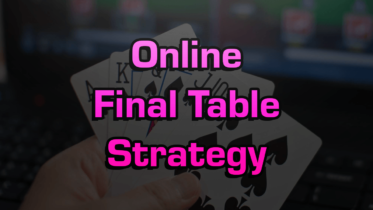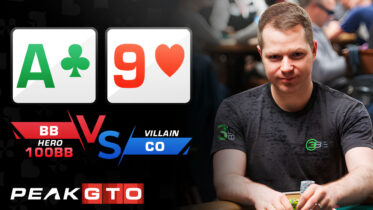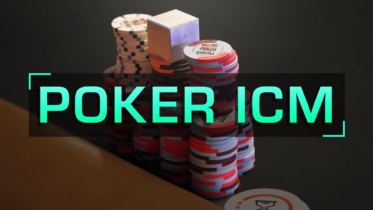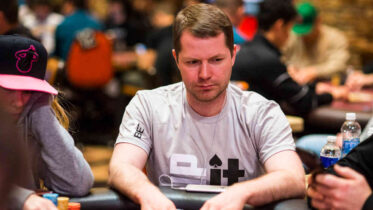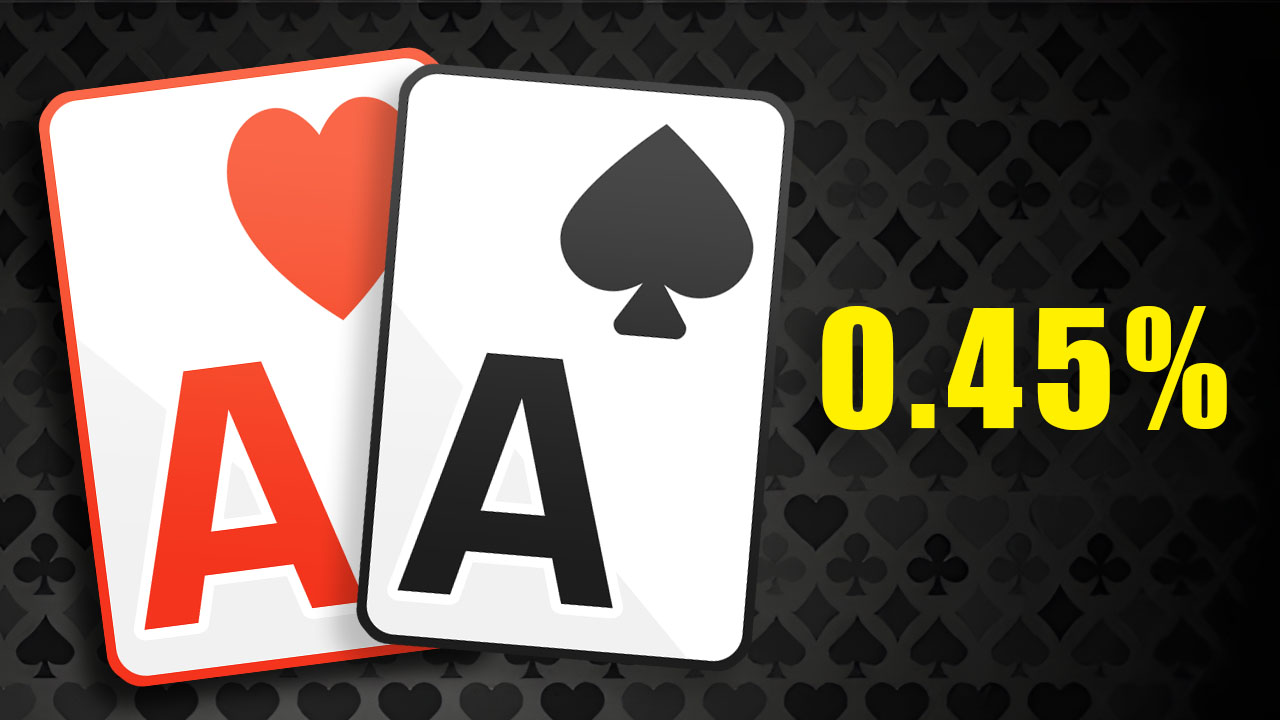If you are willing to study and put in volume, online poker tournaments can be extremely profitable. You make the most money in online poker tournaments the deeper you run in them, which starts by understanding how to approach each tournament stage.
Online Poker Tournament Strategy: The Independent Chip Model (ICM)
Let’s say you are playing in a ten-handed sit & go. In this sit & go, the buy-in is $10, with each player starting with 10,000 chips and the prizes as follows: 1st place receives $50, 2nd place receives $30, 3rd place receives $20.
In tournaments, the chips you risk are worth more than the chips you can win, and the more chips you have, the less each chip is worth. If you win the $10 sit & go, you will have amassed all of the chips, totaling 100,000. Even though the eventual winner will finish with 100% of the chips, they still only receive half of the prize money ($50).
In the same sit & go, there are three players remaining with one player having a stack of 90,000 chips and the other two players having 5,000 each (half a starting stack). Since both short stacks are guaranteed to finish at least in third place for $20, that makes their stacks worth at least that much. With the buy-in being $10 and their stacks now worth double that despite having only half a starting stack, that makes their chips extremely valuable.
Although this example of ICM comes from a sit & go, it is important you know how to apply this to tournaments, as it is quite similar. Remember that ICM is a mathematical model designed to assign a monetary value to chip stacks that is representative of their equity share of the remaining prize pool. Just because you own half of the chips in play doesn’t mean you own half the money in play, as you and the other players are still competing to see who wins.
Online Poker Tournament Hand Example #1
In this tournament, PokerCoaching.com coach Justin Saliba was playing in a $100 buy-in tournament where first place was $52,000 and eighth place was $4,756. Examining the final table below, consider what the biggest stack is worth as well as the shortest stack.
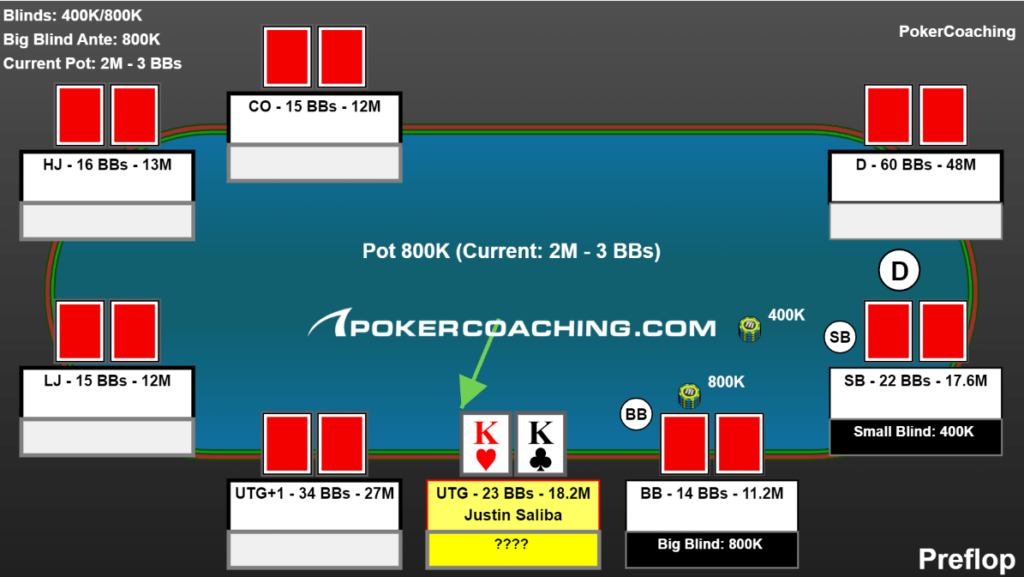
The beautiful thing about playing poker in 2022 is there is a plethora of useful tools at your disposal to make critical calculations. Using an ICM calculator, inputting each player’s stack size as well as the first through eighth place payouts provides the following results:
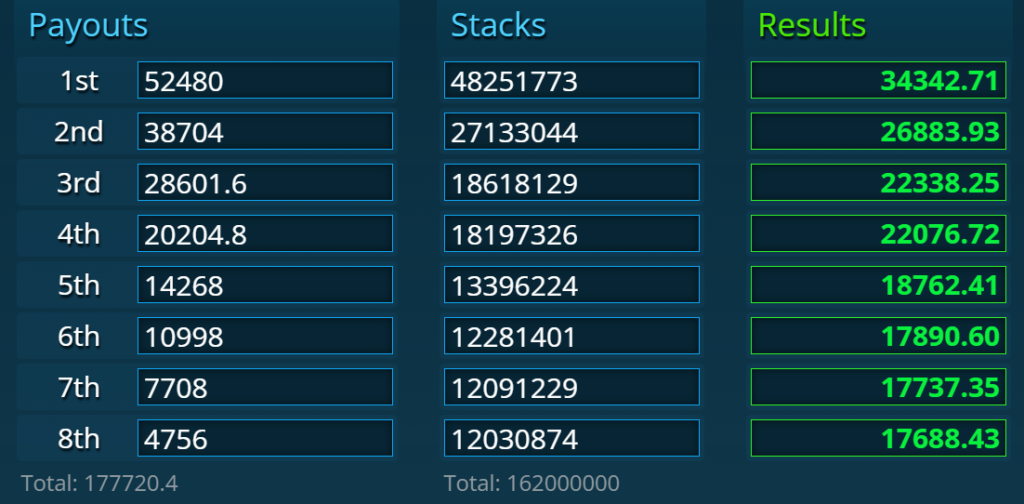
By plugging in the relevant information into the ICM calculator, you are able to see the dollar value of each stack as they stand.
Examining the stack sizes at the table, the three smallest stacks have nearly identical stack sizes. Since these three stacks are almost equal, they have similar dollar amounts when it comes to ICM (in this case around $17,700). If these three stacks were to get it all-in against each other and were flipping, you may assume that whoever doubled their chip stack would also double their ICM worth, but that is not the case. Despite doubling up to 24 million chips, the ICM value of their stack would not double to $35,400, but instead would be around $24,000.
Unless they have a really strong hand, these short stacks do not want to get it all-in. A lot of players will be happy to get it all-in preflop with a hand like pocket nines or A-Q, but busting in eighth place would be absolutely terrible and would make such hands not worth the risk. Not only the short stacks, but all of the stacks at this final table do not want to go all-in unless they have a significant edge. Remember, while it is nice to win the tournament, your goal is to make money. The best players in the world make a living by getting second and third in tournaments, while not ideal, if you can play somewhat tight and take good, calculated risks at the final table, you will generate more income in the long run.
Online Poker Tournament Hand Example #2
Battling it out and witnessing one player get eliminated, Justin Saliba was on the button with pocket eights at the same final table. Following a min-raise from the lojack, what was the right play for Justin to make?
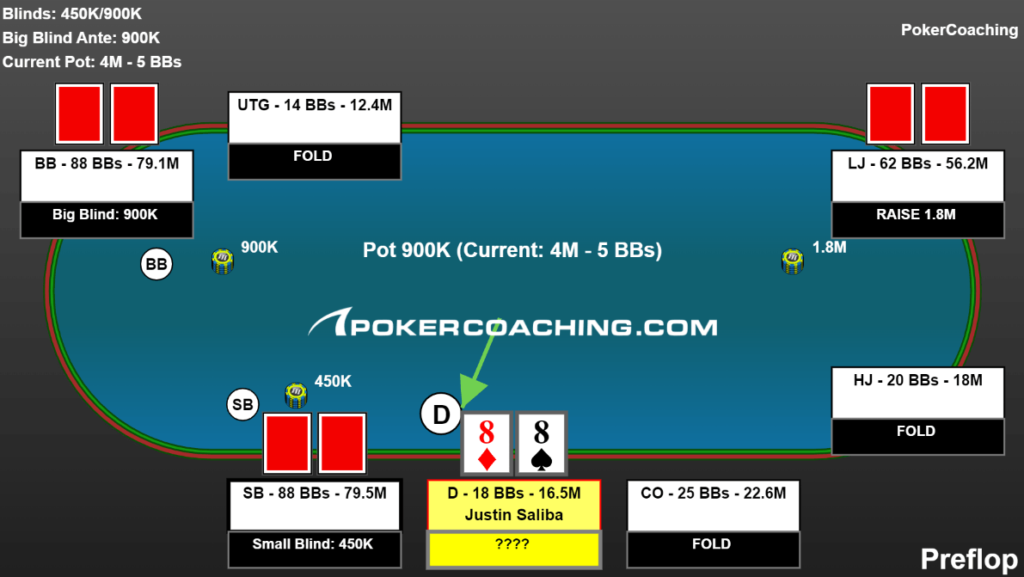
When considering this spot, it is important to first consider what the big stack is raising with. With no payout implications, if the lojack was raising with a default range Justin was in a good spot to shove with his pocket eights. However, this was the final table, and considering the payout implications, Justin was not incentivized to shove his pocket eights, but rather call.
With the payout jumps, Justin should have considered folding even if he had pocket tens, jacks, and even queens. However, a good player chip leading this final table would know to expand their raising range to apply pressure to the smaller stacks. If Justin knew the lojack to be a good player capable of expanding their range, then in turn his pocket eights were strong enough to shove with, even with the ICM implications!
Justin’s pocket eights hand serves as a quality example of how you must adjust to your opponent’s tendencies, especially at the final table. What is a profitable ICM play against one opponent may not be one facing another, make the proper adjustments and try to exploit your opponent’s tendencies at the final table.
Online Poker Tournament Hand Example #3
Following another elimination, Justin was now fifth in chips with six players remaining. Folded to in the cutoff, Justin had a decision to make with A-K offsuit.

Despite being the first to enter the pot, Justin had a very easy all-in. If this wasn’t the final table, Justin had a clear min-raise, but at the final table, he was incentivized to shove rather than min-raise and risk facing an all-in from an opponent. By shoving, Justin only provides his opponent with two options, either fold or call with something really good, inducing them to fold the majority of their range.
The hands Justin would have wanted to min-raise were his best premium hands he didn’t mind calling an all-in with, like pocket queens and better. Additionally, he should have included some bluff hands in his min-raising range like K-J offsuit. Many players make the mistake of just min-raising everything in this spot, but the optimal strategy is to min-raise your best hands for value and raise your strong, big card hands that block your opponents from having premium holdings.
Risk Premium In Online Poker Tournaments
Risk premium is the extra equity needed for a decision to be profitable when taking ICM into account.
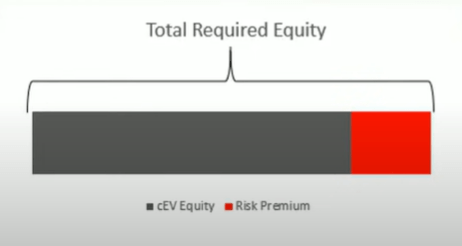
Normally, you need some amount of chip EV if there are no payout implications whatsoever, but with payout implications, you need additional equity to rationalize any play. Taking risk premium into considerations, small stack, and even some big stacks, tighten up their play.
The hard thing to do at the final table, or even before the final table, is determining what the needed risk premium is when making big decisions. It is incredibly difficult, even with the tools and solvers at our disposal, to determine what the needed risk premium is to make certain plays. While not exact, the following chart is a good guide to help you calculate the risk premium you need to fulfill (assuming there are no extremely short stacks in play).

Evaluating Risk Premium In Online Poker Tournaments
When using the Risk Premium Values Chart, start by finding your stack size on the left side of the chart. Let’s say you are a big stack playing at a final table, if faced with an all-in from an opposing player, you would locate “Big Stack” on the left portion of the chart, and find the column associated with your opponent’s relative stack size. After pinpointing the correct section of the chart to reference, you are provided with the necessary equity needed to make a profitable call.
Example Of Using The Risk Premium Values Chart
In this example, you have 30 big blinds at the final table. You are in the big blind, with the small blind on your right also having 30 big blinds, and every other player at the table having 12 big blinds.
Everyone at the table folds to the small blind, who moves all-in. Referencing the Risk Premium Values Chart, you would know that you needed an additional 18-25% equity (the risk premium) plus whatever required equity you would need if this hand wasn’t taking place at the final table.
Now let’s say instead of the big stacked small blind, the button with 12 big blinds goes all-in. Again, referencing the Risk Premium Values Chart, you would see that 2%-4% equity plus whatever equity would be required in a “non-final table” hand would be needed to profitably make the call.
Important Factors To Note When Considering Risk Premium
As with anything in poker, you must take every factor and piece of information at your disposal when considering your decisions. When assessing the required risk premium needed to make certain plays, know that the flatter a tournament’s payout structure, the higher the necessary risk premium as there is more value in reaching the next pay ladder.
It is important to know that risk premium applies to all bets. When assessing risk premium post flop, they are much smaller, usually 2%-8%. As a big stack facing another big stack post flop, while you do not need the 18%-25% that is required preflop, you do need at least a little bit more equity than usual to make certain plays. Often this leads to good, aggressive big stacks battling it out, especially if they will still have a decent amount of chips if they lose.
Risk Premium Example
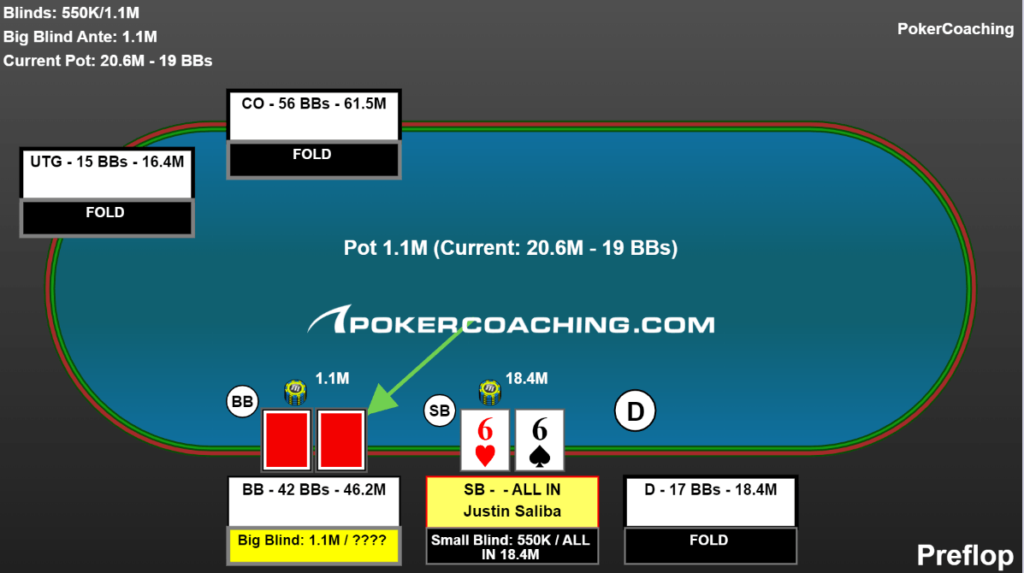
Revisiting Justin Saliba’s final table, we see that the two-time WSOP bracelet winner has shoved pocket sixes preflop from the small blind for roughly 18 big blinds. Although we can see he elected to shove, should Justin shove wider or tighter with the payout implications? In this spot, Justin is incentivized to shove tighter, as he does not want to risk going broke with two fairly equal stacks still remaining at the table. The more short stacks remaining at the table, the more incentivized Justin is to tighten his shoving range.
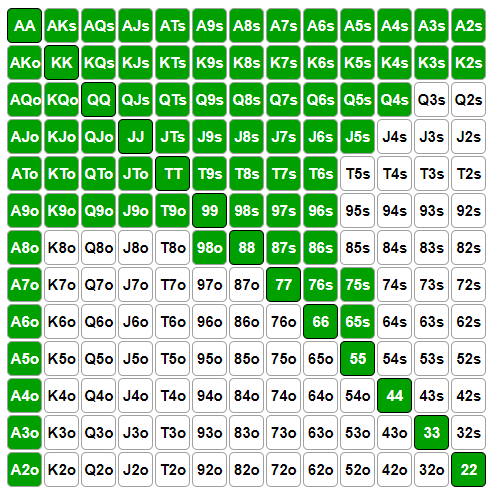
The above chart represents a profitable all-in range for Justin, which is about 41% of hands. If Justin were playing this exact hand without ICM implications, his range would widen to 54% of hands. If Justin were to implement a profitable limping strategy based on this range, he would limp with hands on the edge of the range as well as his best premium hands (pocket jacks and better).
Considering the big blind’s decision, how much additional equity do they need to account for the risk premium? Referencing the corresponding row and column of the Risk Premium Values Chart, the big blind would need roughly 5% additional equity in this spot to profitably make the call.
Big Blind Pot Odds = 17.3 million/(17.3 million+20.3 million) = 46%
Taking the big blind’s pot odds and adding the required risk premium, they need 51% total equity to profitably call in this spot, with that range being shown below:
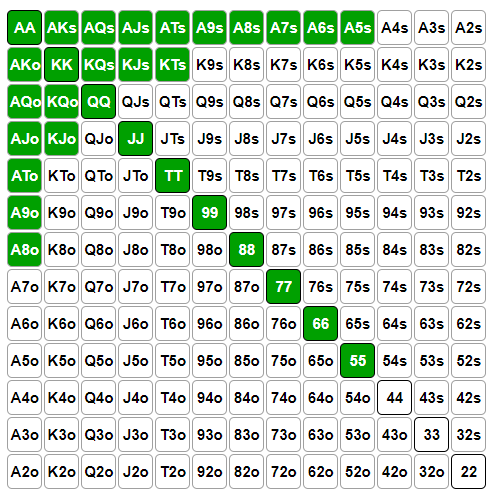
The Flaws Of ICM
Even though referencing ICM will help you immensely as you consider how to play big spots late in tournaments, there are a few flaws to the model you should keep in mind. Perhaps the most significant flaw of ICM is that it assumes the tournament stops after the current hand and that all players are paid the equity of the prize pool. Any tournament poker player would know that the tournament only stops once one player has all of the chips.
ICM also fails to account for factors like skill edge, position, the size of the blinds, and when the blinds will eventually increase. These factors are critical regardless of what stage of the tournament it is. Just because the tournament has reached the money or the final table does not make them any less relevant.
Poker is never as easy as plugging the numbers into a calculator, it requires dedicating time to study poker strategies and knowing how to apply them.
Conclusion
When you make it to the final table, it is normal to transfix on winning the tournament. After withstanding a large field, being that close to the top of the podium can be alluring and distracting. While there is nothing wrong in wanting to win, when you reach the final table your main focus should always be to play profitably and increase your bankroll.
Knowing concepts like ICM will help you make the best decisions when you reach the final table. Sometimes you will have to make tough folds to sustain your tournament life and pick more profitable spots, but remember that sticking to these fundamentals will net you more profit in the long run.
